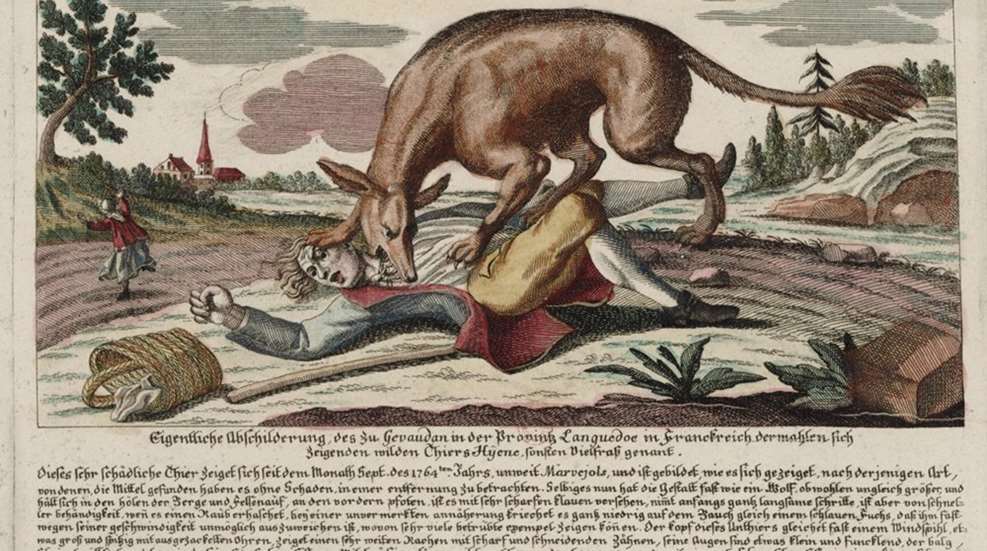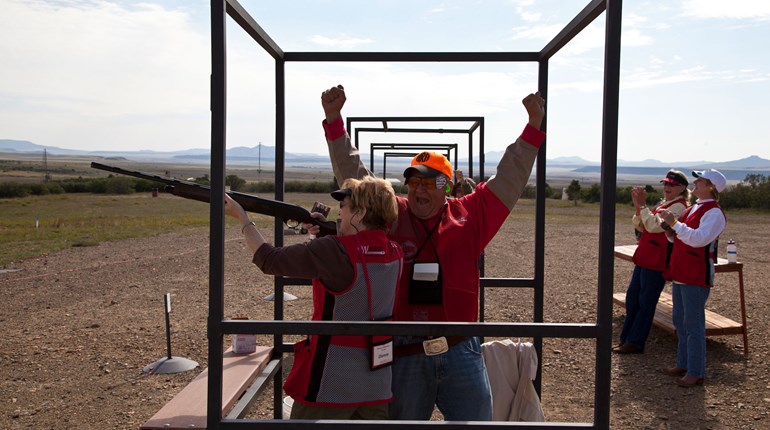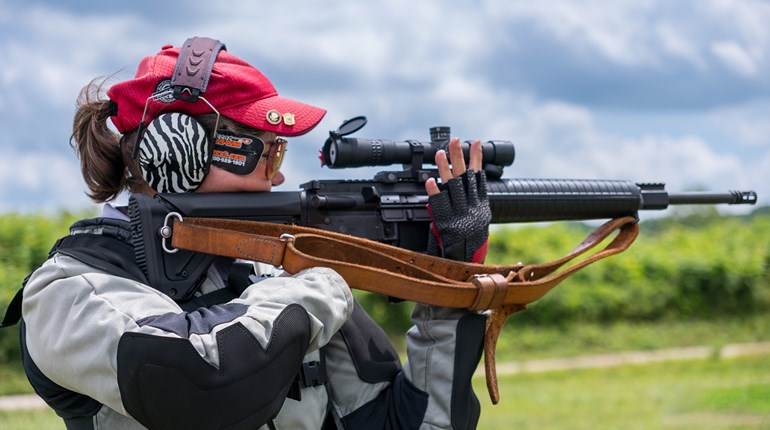
The young woman hurried through the wilderness, darkness falling around her like an omen. She wouldn’t have gone so far from home today if she could have helped it, but 18th-century France wasn’t a place where things were as the villagers wished. Especially not now.
For a year, her village, Gevaudan, had been haunted—and the villagers hunted—by a living nightmare. The newspapers were calling it the Beast of Gevaudan, a monstrous wolf with a ravenous appetite for human flesh. It had a particular taste for the flesh of women and children, as Marie-Jean Vallet had known that morning when she prepared to leave; the Beast found them easier prey. She hurried her steps.
As Marie-Jean crossed a stream, her intuition prickled a warning: It’s behind you. And it was.
She spun furiously, somehow already knowing that she had only one chance to live, somehow already drawing the homemade spear she’d fashioned herself. Somehow already aiming it dead-center into the chest of the enormous wolf, which was already mid-leap. Impaled, wounded, but not dead, the wolf roared in rage and pain and fell into the stream. Marie-Jean had triumphed where all the king’s horses and all the king’s men failed.
All the King's Men
That last is no exaggeration. It was the reign of Louis XV, and the political unrest that would eventually lead to the overthrow of his successor was already beginning. Louis XV needed a “win,” and the newly burgeoning press had provided what looked like an easy one: There was a big, bad wolf in Gevaudan that needed to be put down. Louis XV had a personal hunter and bodyguard, the best hunting technology of the day … and an actual army.
Between the men sent by the King and the peasant volunteers who had also been stirred by the news, an astonishing 30,000 hunters tried to slay the Beast. They brought home wolf carcass after wolf carcass—hundreds, thousands of them—but the slaughter continued.
It’s easy to forget, in these well-lit modern days of scientific wildlife management, that wolves earned their reputation as man-killers. It was fairly common for them to attack humans at that time and place. The Gevaudan Beast was in a class all its own, though. Record-keeping being what it was at the time, the estimates for how many people were eaten by the Beast vary from as few as 60 to as many as 300.
Was It a Wolf?
What’s particularly interesting about the Beast of Gevaudan is that the villagers who saw it and lived described it as looking rather un-lupine. First, it was said to be much larger than the average wolf; some said it was donkey-sized. Next, it was an unusual color, a deep rufous coat marked with black stripes. Some villagers said it had a blunt muzzle, “like a calf’s,” while others said it had hooves instead of paws. Finally, although wolves were well known to eat humans, the sheer scale of the slaughter was beyond anything anyone in living memory knew of.
In fact, many contemporary accounts—including the caption of the above illustration—describe the Beast as a hyena. It is possible that the Beast was an escapee from someone’s private menagerie … but even though hyenas are occasionally blamed for attacks on humans, it’s extremely rare that it actually happens at all, let alone to have dozens of them.
There’s another, even weirder, theory. Do you recall that some witnesses described the Beast as having hooves? Many people believe the Gevaudan Beast was a cryptid. Specifically, contemporary descriptions of it eerily match the appearance of an extinct species of animal called a mesonychid. Mesonychids were hoofed animals (ungulates, to be exact) that were carnivorous. Ranging in size from a jackal to a black bear, modern reconstructions of the animal have it looking like a cross between a hyena and a pig. Nobody knows what they would really have looked like, of course, because the last one went extinct 23 million years ago.
It seems most likely, though, that the Gevaudan Beast was just a wolf—or, more precisely, several of them. At one point, the King’s royal huntsman (now wouldn’t that be a job to envy!) slew an enormous red wolf and proudly presented the King with its hide. The attacks stopped … but two months later, they restarted.
Wolf packs are, as we now know, really just family units in which parent wolves teach the cubs how to hunt. If one of the parents taught cubs to hunt humans, then removing one member of the pack wouldn’t stop the rest of them. The Beast’s size and coloration was unusual, but not unheard-of, and one would expect to see it repeated in a family line.
Still, mysteries remain, and they invoke deeper ones. How could so many thousands of hunters, including the best wolf hunters in the world, have missed the Beast (or Beasts) for so long? Hundreds of people saw the Beast, and although ignorance and fear explains a lot, it doesn’t explain all of the strange things they noticed about it. After all, these villagers had been dealing with wolves all of their lives, and knew perfectly well what they look like.
We don’t know why these discrepancies; we don’t know what drove the ferocity of the Beast; we don’t even know for sure how many victims it took. What we do know is the same thing that Marie-Jean Vallet knew as she spun on her heel in the gloaming: There is no way to know when the Beast may be stalking you, so best be prepared, listen to your instinct when it speaks, and show no hesitation with the spear.
Editor’s note: If you’d like more spooky thrills on this subject, check out The Brotherhood of the Wolf, a 2001 French movie (with subtitles).















































